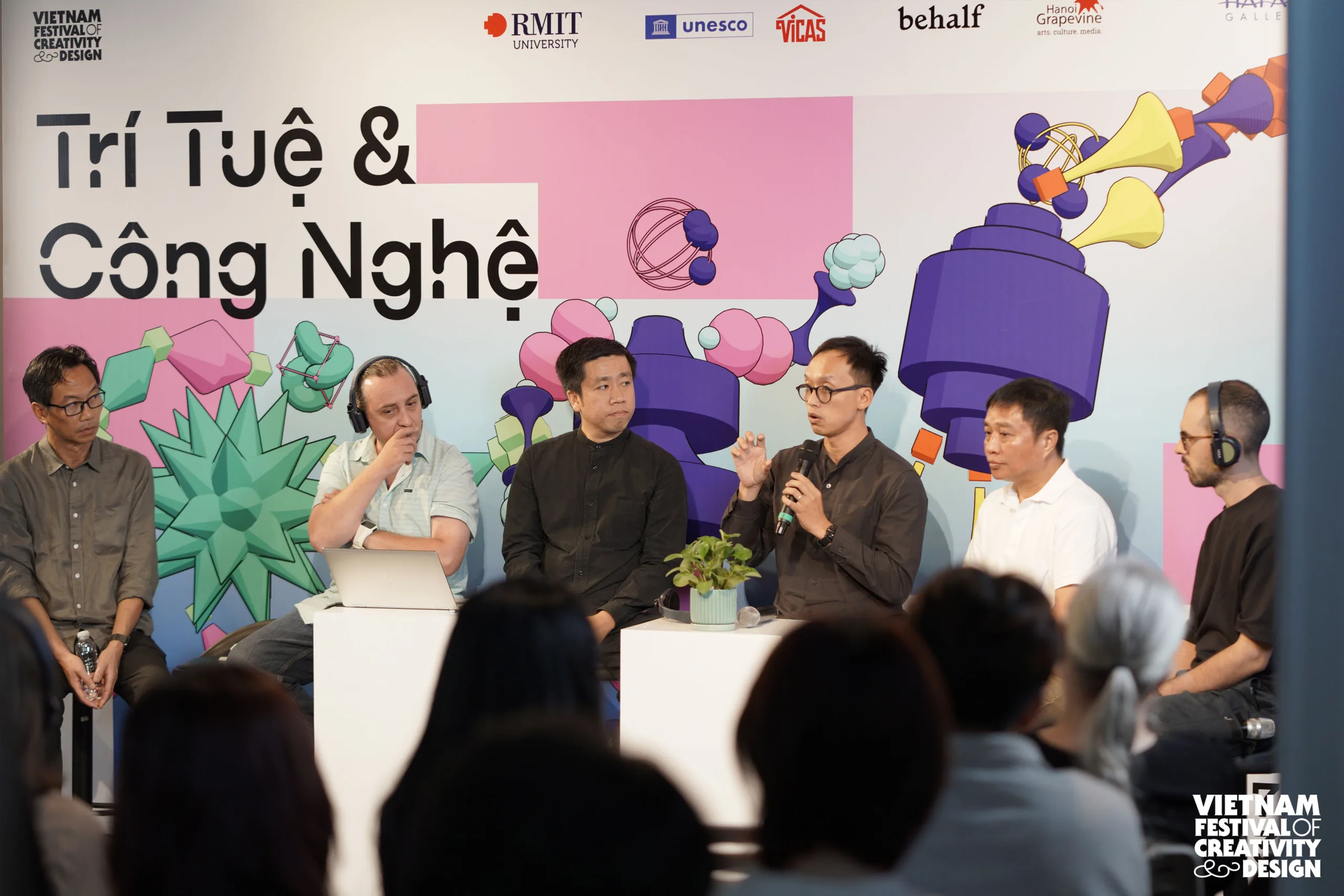Heritage does not exist forever in the form of memories, heritage is for co-existence, continuation and transformation in alignment with people’s lives and needs. On November 18, the symposium “Future Heritage: Constructing Heritage through Spatial Making and Mapping” took place with speakers from various industries who shared their perspectives and methods to preserve and create new essences and values based on Vietnamese socio-cultural foundation through the lens of urban planning, architecture and interior design.
Contemporary architecture inherits from traditions
Under the lens of architecture, Vietnamese heritage possesses distinctive characteristics widely recognised by experts and architects: open space that blends with nature, and blurred boundaries between shared and personal spaces. Facing the challenge of creating future heritage amid contemporary issues such as rapid urbanisation and industrialisation, the harmonisation between new lifestyles and old traditions, architects and researchers speaking at the event presented their viewpoints.
“Build less to create more values.” _ Architect Nguyễn Hoàng Mạnh, Director of MIA Design Studio
This is the core principle of MIA Design Studio when working on architectural projects. Taking into consideration the dark side of the urbanisation space in Vietnam, where living areas are gradually shrunken coupled with few community spaces leading to the overexploitation of urban public spaces, architect Nguyễn Hoàng Mạnh wants to shine the spotlight on incorporating greenery in construction projects, creating a balanced harmony, reintroducing people to nature and ensure a good quality of life.
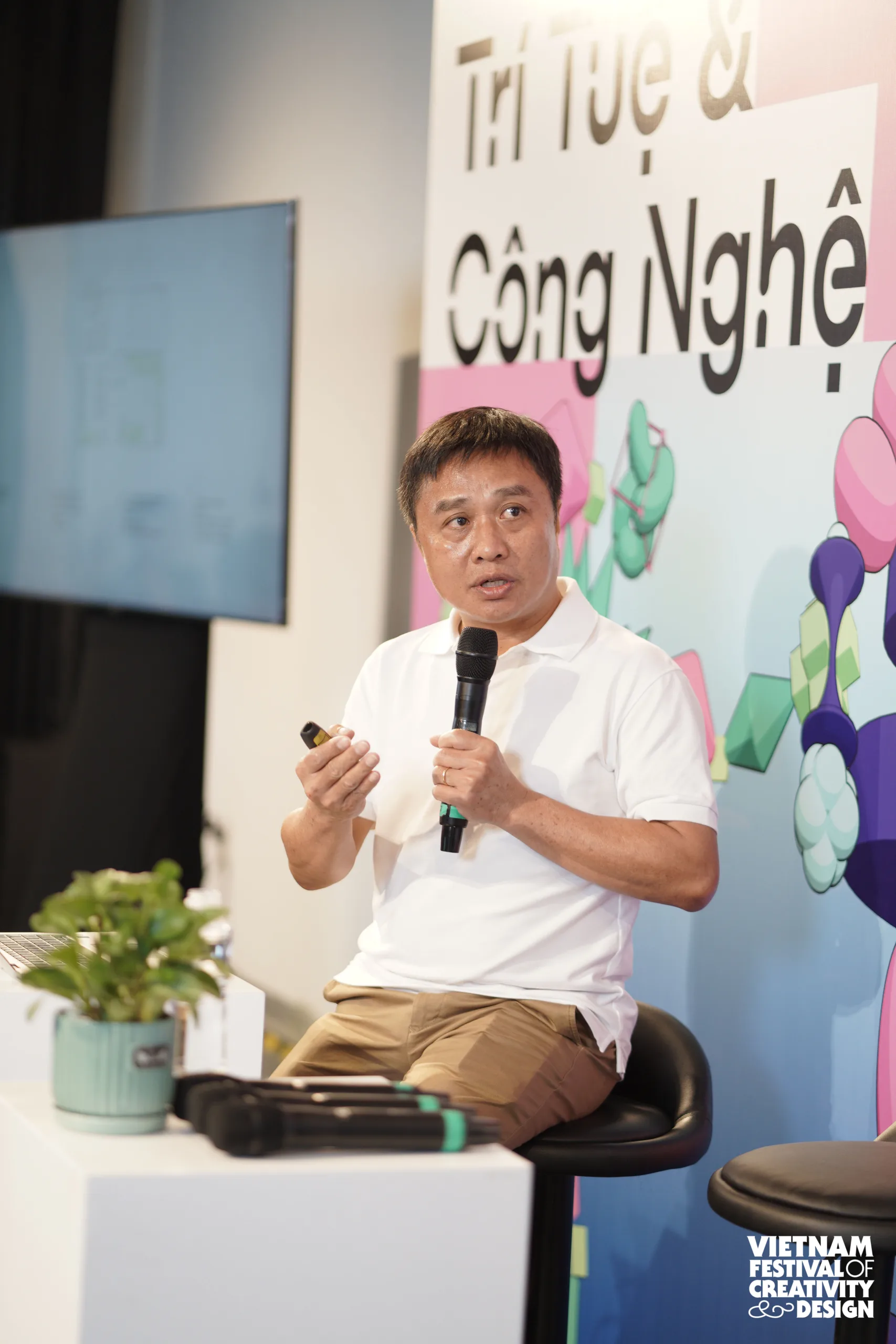
Architect Nguyễn Hoàng Mạnh
For Dr Đặng Thanh Hưng, lecturer at the Faculty of Architecture, University of Architecture HCMC, heritage is the result of the relationship between humans, architecture and the urban context, and therefore a small action can have a great influence over the subsequent links. He chose to focus on residential buildings in Ho Chi Minh City, as in his opinion, these are small structures with few studies but are vulnerable to climate, and directly impact the people. Conducting in-depth research on areas with diverse housing types such as Sunrise City (District 7), and alleyways on Lý Chính Thắng and Nguyễn Công Trứ streets… he confirmed that Vietnamese people’s domestic habits indoors are greatly influenced by the hot and humid climate as well as intense solar radiation. From that point, he strongly opts for natural ventilation designs that help reduce both indoor and outdoor temperatures, transforming and improving urban shapes and spaces.
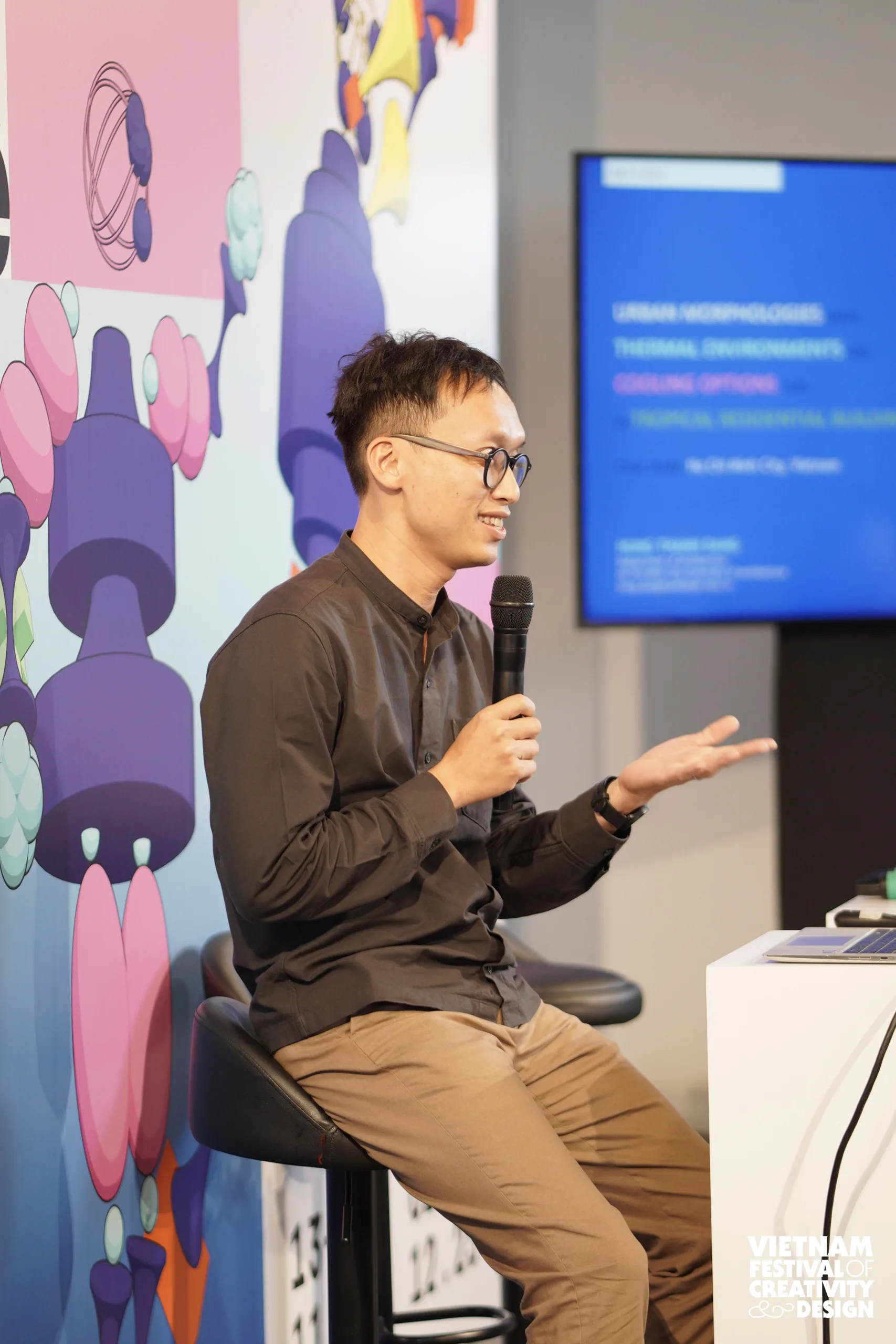
Dr. Đặng Thanh Hưng
Crossing paths on preservation and creation of heritage under the lens of architecture, Dr Huỳnh Văn Khang, deputy head of the Faculty of Architecture and Arts, head of the Architecture major at HCMC University of Technology (HUTECH) sees the key point in blending traditions in contemporary architecture is the concern for human and natural contexts, specifically the weather. It is weather conditions that shaped the traditional housing features of the Vietnamese, such as the priority for effective ventilation, a space in front of the house, and heat-dissipating woods… Not imposing extreme adherence to old forms on architecture, he singles out and incorporates pieces of traditions into contemporary architecture. At the same time, while maintaining the connections between traditions and modernity, he also wants to provide practical opportunities to students through educational programmes to drive forward the resources that can continue creating heritage in the future.
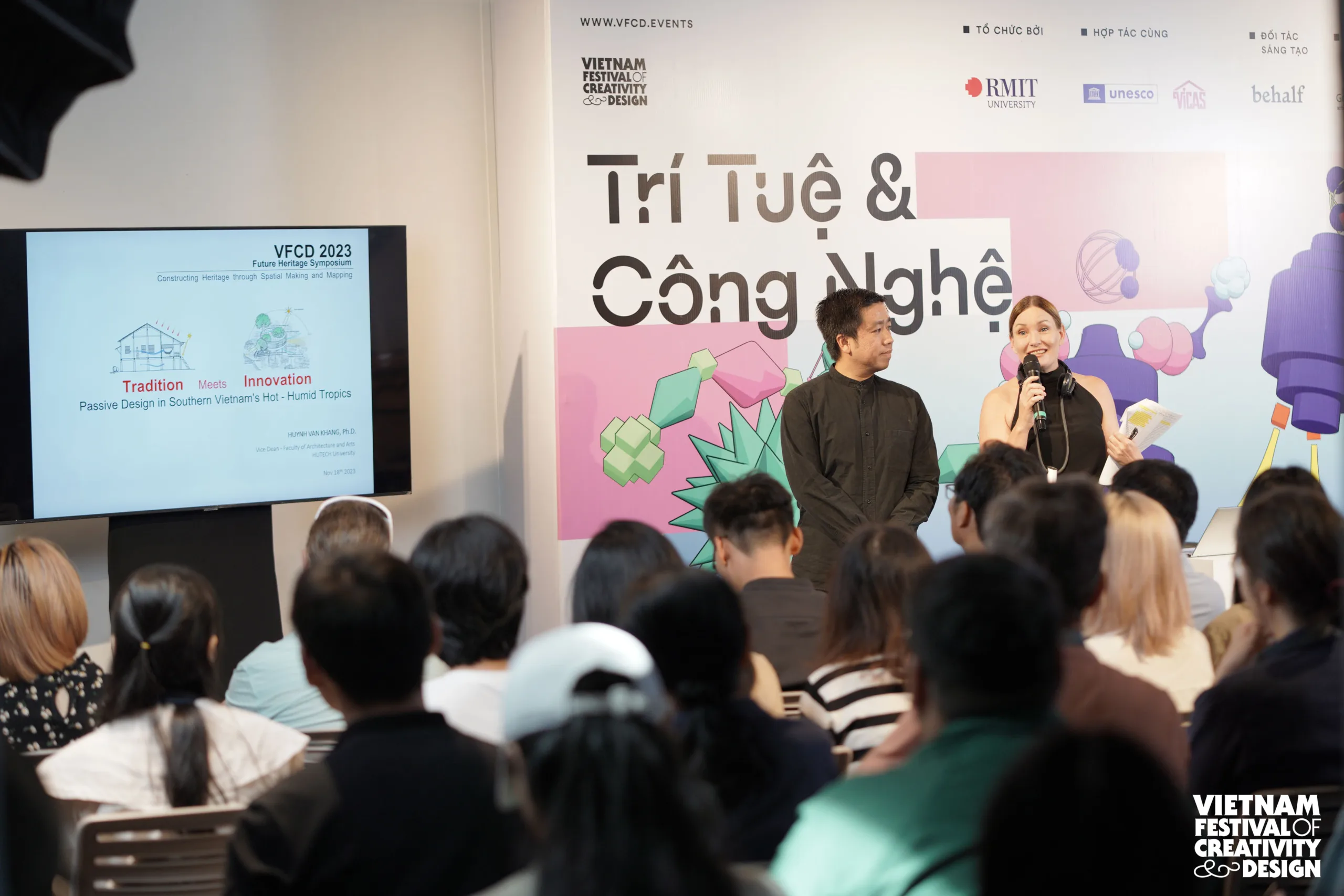
Dr Huỳnh Văn Khang
Sharing the same perspectives on preserving traditional values, Dr Hoành Trần, Director of HTAP Architects expressed a fondness for renovating old structures. For him, renovation brings interesting challenges and breathes a new life and style into the ancient architecture. The freedom of renovation, compared to preservation and maintenance, is the lack of need for in-depth study and search for era-appropriate materials; but rather expanding and adapting the functions and usage needs for the structure. With the principles of safeguarding the roots while making appropriate changes according to current needs, he brought a fresh and positive appearance to many of HCMC buildings, such as Bun Ta (Nam Kỳ Khởi Nghĩa), Gallery Quỳnh (Lý Tự Trọng, Đồng Khởi), Toong (Hàm Nghi, Nguyễn Thị Minh Khai),…
Architect Manuel de Hagopian, Director of G8A Architecture & Urban Planning explores the heritage of villages to help bring traditions into urban life. A survey revealed that from 1930 to 2006, the number of villages in Vietnam did not decline but saw a significant increase of 20%, which is proof that the model of traditional villages still holds strong values to this day. G8A Architecture & Urban Planning has implemented 03 models of villages: technology village, production village and urban village, focusing on expanding the green areas within the structures.
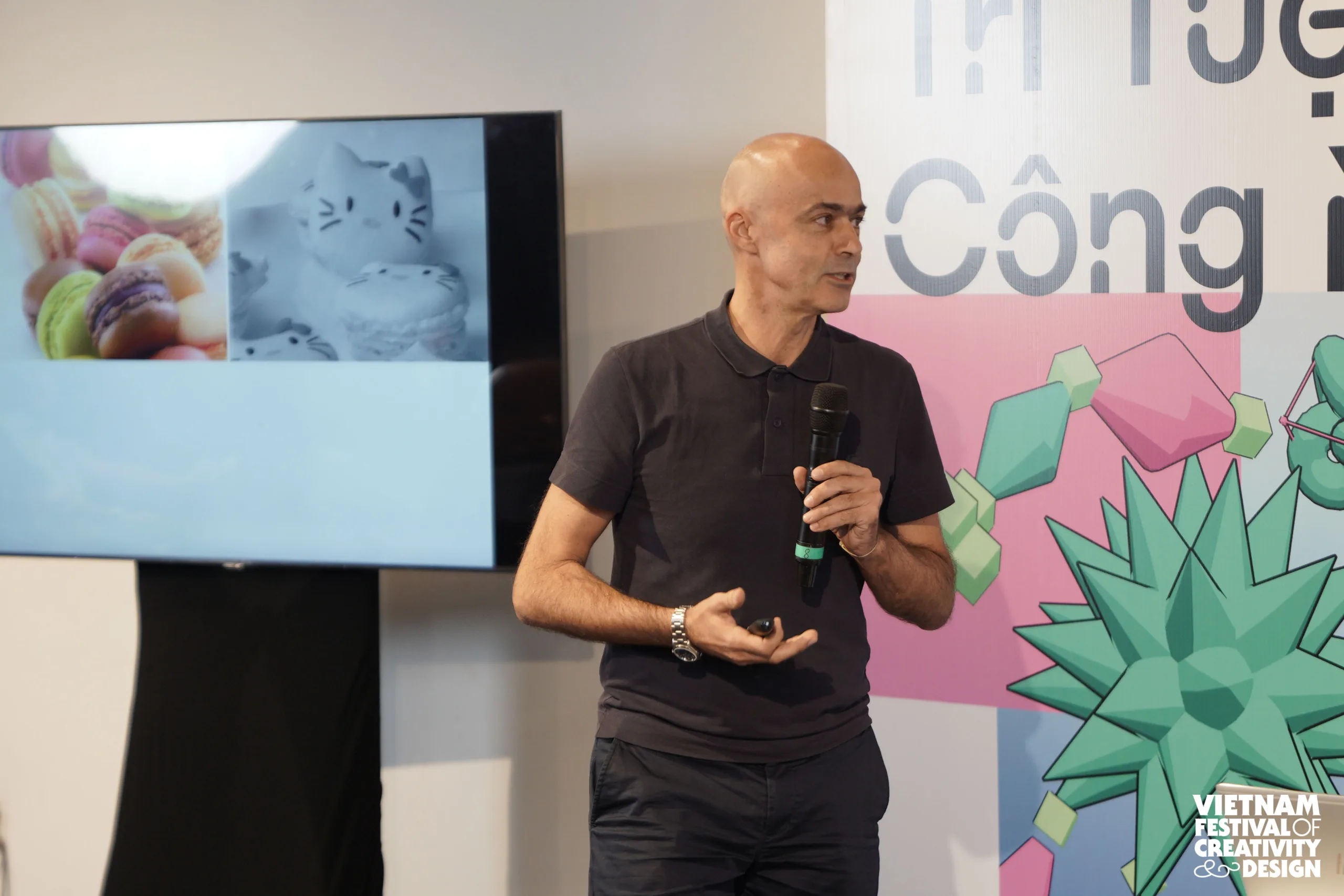
Architect Manuel de Hagopian
In regard to open spaces, Architect Daisuke Sanuki, Director of Sanuki Daisuke Architects has a different perspective and design approach. Based on his experience living and working in Vietnam, he once again underlines the current shortcomings: shrinking spaces, dull and monotonous areas, harsh weather and most importantly the encroachment of public spaces. Unlike the conventional design processes, he does not put priority on the main functional areas but rather shapes empty spaces, allowing the necessary areas to emerge naturally. His designs aim at resolving the density and proposing innovative structures that help expand the shared space, harnessing sunlight and natural ventilation.
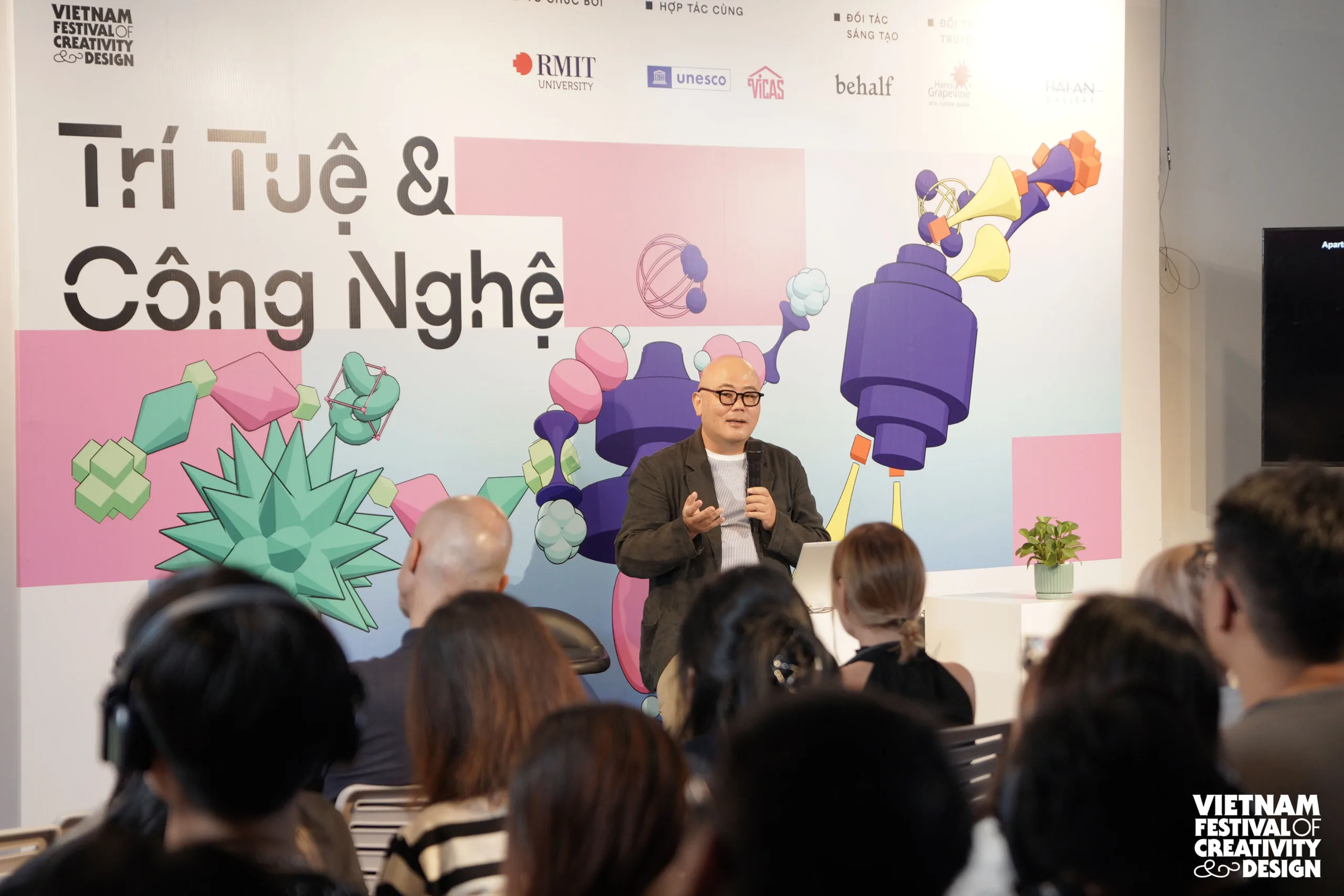
Architect Daisuke Sanuki
Responding to the creation of heritage from architecture is not only about focusing on the details but also the broader overview. For Italian architect Carmen Volonnino, Architecture Director of 3TI PROGETTI ASIA, architectural design and especially local architecture requires a comprehensive approach. Not only elements of the national cultural heritage but the geologic and topographic characteristics of the area need to be valued. It is also necessary to thoroughly analyse the visible features and the spiritual values of culture to determine the designs.
Future heritage – other aspects
Heritage is not the result generated by humans, heritage still exists and manifests naturally in various forms, in humans, in their way of life and in everyday things.
Not focusing on the tangible aspect of heritage, Thierry Bernard, lecturer at the School of Communication and Design, RMIT University Vietnam has a different approach by exploring the hidden elements that receive less attention which are spaces and how they are influenced by sounds. For him, sounds are the signal of life, and without sound, we are close to death. By recording sounds, the vibrations of life, and the movements of people and objects in space, he created a terrestrial and atmospheric map. The intensity of invisible sounds perceived by hearing are translated into colours, a visual format and a vibrant approach to shaping future heritage.
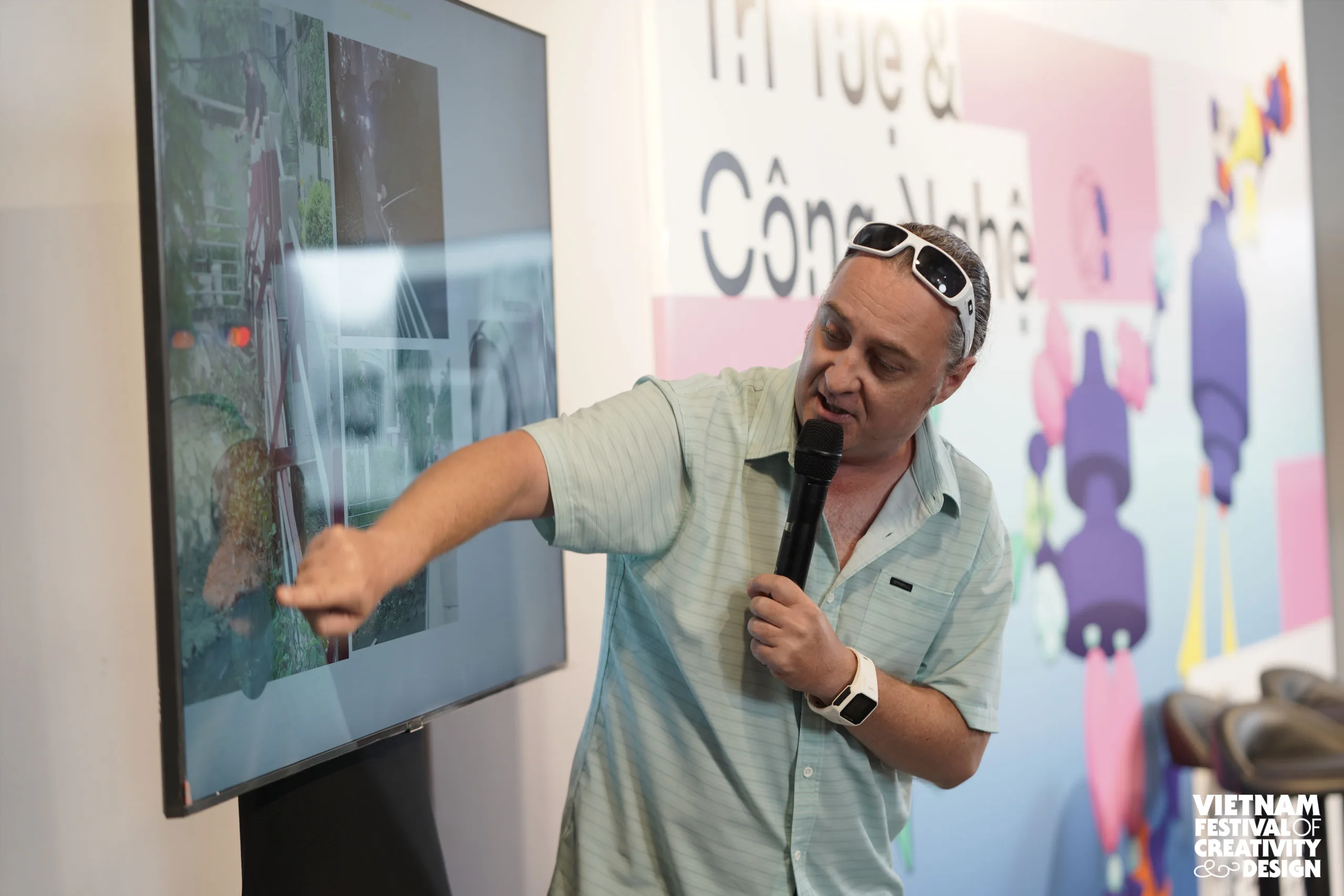
Thierry Bernard
Yuri Frassi, Director of Officine Gặp and a PhD candidate in Architecture and Urban Design at RMIT University Melbourne, has his own approach to preserving heritage in the form of urban architecture. With the clichés in global urban architecture and the pressure to create a prominent image for the city to drive economic growth through tourism, what can make a difference? He believes that urban planning projects which often paint a splendid and fancy picture of the future, unintentionally overlook the essential elements. Urban development should be entrusted to local residents. Through coexistence, interaction, and experiences, heritages can continue to be generated, forming intriguing attractions.
Andrew Stiff and Becky Lu, the lecturers at the School of Communication and Design at RMIT University Vietnam, recreate heritage by applying augmented reality (AR) technology and exploring the differences and similarities in the habits and lifestyles of residents in District 4 and District 7, Ho Chi Minh City, with a focus on the Kênh Tẻ (Tẻ Canal). As part of the global research platform “The rivers cities network”, Andrew and Becky observed and documented the impacts of urbanisation on the residents. For them, the blurred boundaries between shared and personal spaces are a positive aspect as they allow for vivid observations and experiences of the rhythms of life with all senses, and the heritage stemming from interactions is also fulfilling and flourishing.
To create heritage and generate a breakthrough for the future, the starting point needs to be fueled by passion and dedication to everyday moments of life. Architect Nguyễn Đình Hòa of LAITA Design is the testimony to this statement. His unique creations stem from fascinating discoveries in life, driven by passion and admiration for the wonders of humanity.
Inspired by personal concerns and witnessed the Rạng Đông factory fire in 2019, architect Mai Hưng Trung established Hanoi Ad Hoc with the aim of researching urban elements, building a diverse digital archive, and establishing a map of industrial heritage. For him, the urban environment and its constituents belong to the urban residents, therefore, Hanoi Ad Hoc is created as a platform for interdisciplinary exchange and democratic engagement for the rights in shaping the city.
The future heritage can be a harmonious coexistence between traditional and modern values, the demolition and dismantling of old elements, or the emergence of transformative changes that align with humans and the era. There is no common denominator for creating future heritage. With passion, effort and a strong aspiration for contribution, researchers, architects and designers are on a journey to offer their own definitions and unique approaches to continue the traditional values. Heritage is not merely a noun or a static format; it is dynamic, transformative and changing with continuous integration and selection.
Heritage represents the most beautiful and vibrant aspects of humanity, it lies in the hands of people and is determined by people!
You can rewatch the symposium on VFCD Youtube channel at: https://www.youtube.com/@vfcd.events
